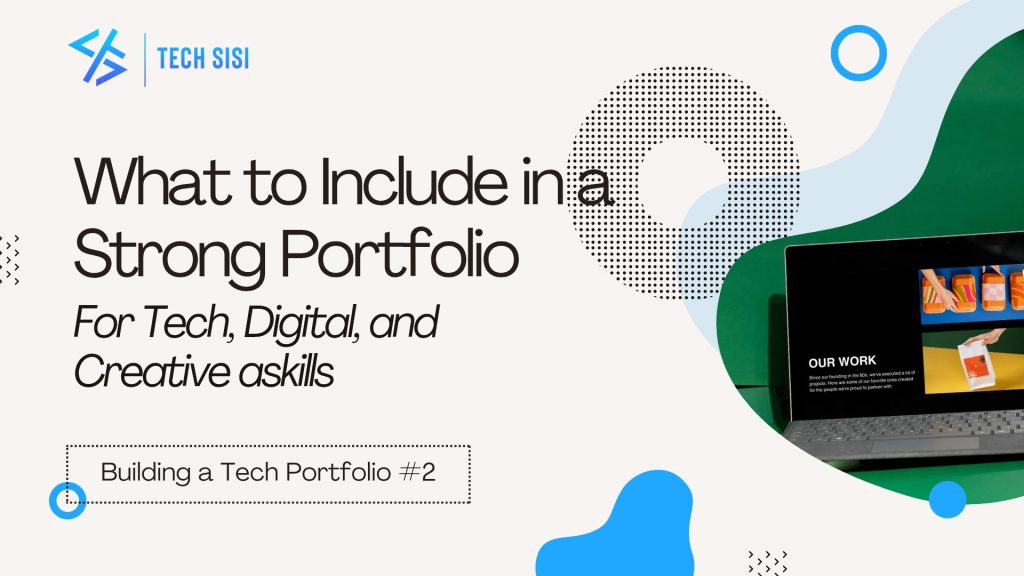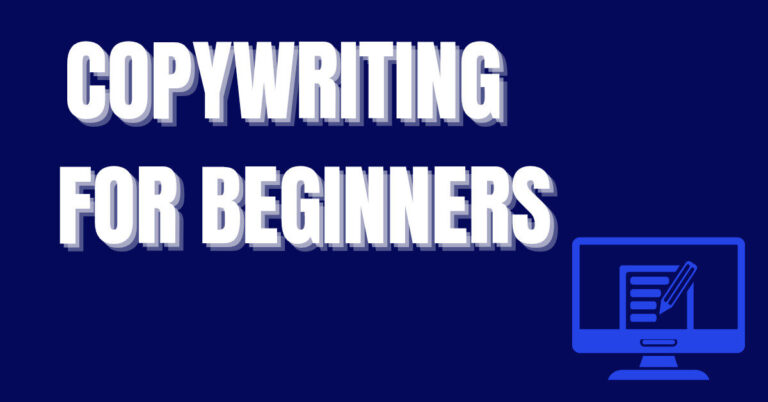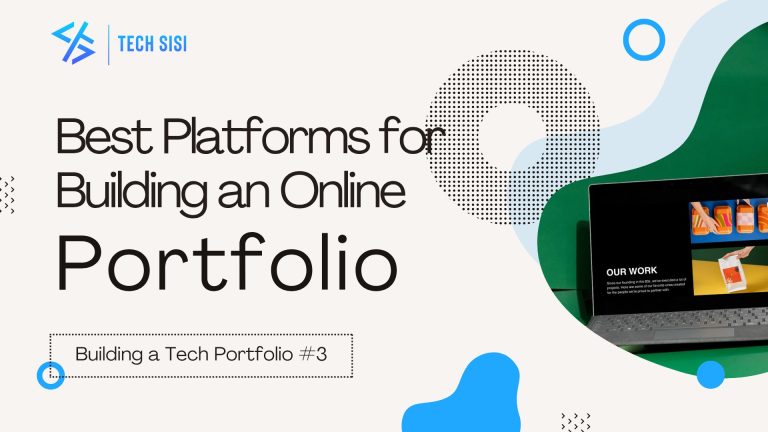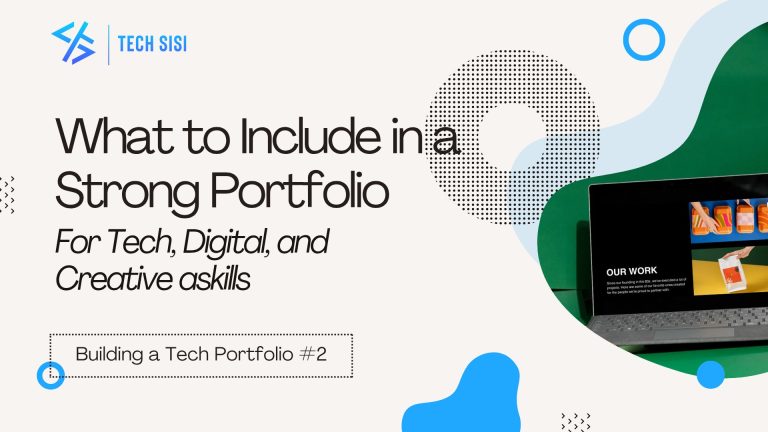A well-crafted portfolio is essential for showcasing your digital and creative skills, whether in tech, writing, graphic design, SEO, or other fields. Your portfolio is more than a resume—it’s a visual and written showcase of your projects, achievements, and skills, strategically designed to attract potential clients and employers. This guide breaks down the key elements and tips for creating a portfolio that stands out in the competitive tech, digital, and creative industries.
1. About Me: Set the Tone and Showcase Your Uniqueness

Start with a compelling introduction that draws readers in, giving a glimpse of your professional persona, passions, and expertise. This section should communicate your unique value proposition and a clear sense of your personality.
- Craft a Strong Bio: Introduce yourself with a short but impactful bio. Highlight your career journey, key skills, and what sets you apart. For instance, “A creative content writer and SEO strategist with a knack for transforming complex ideas into engaging, optimized content” captures the reader’s attention.
- Professional Headshot: A high-quality headshot adds a personal touch, establishing trust and relatability. Choose a friendly, professional photo that aligns with your brand.
- Core Competencies: Outline your main skills here, such as “Content Writing, SEO, Social Media Management, Adobe Photoshop, Web Development, Python Programming.” This provides a quick overview of what you bring to the table.
2. Skills: Highlight the Breadth and Depth of Your Expertise

This section lets you go deeper into your capabilities, covering both technical skills and soft skills that make you effective in the workplace.
- Technical Skills: Categorize your technical skills for clarity. For instance, under “Content Creation,” you might include SEO, copywriting, storytelling, and editing. If you’re a designer, list tools like Adobe Creative Suite, Figma, and Canva. Developers can break down skills by languages, frameworks, and software.
- Soft Skills: Showcase essential soft skills, such as time management, adaptability, communication, and creativity. Briefly contextualize these skills—for example, “Skilled in delivering high-quality content under tight deadlines, collaborating with cross-functional teams.”
- Certifications and Courses: Certifications demonstrate ongoing learning and validate your expertise. List any credentials, such as “Certified SEO Professional by Moz,” “HubSpot Content Marketing Certified,” or any relevant courses from platforms like Coursera, Udemy, or LinkedIn Learning.
3. Projects: Demonstrate Your Skills in Action
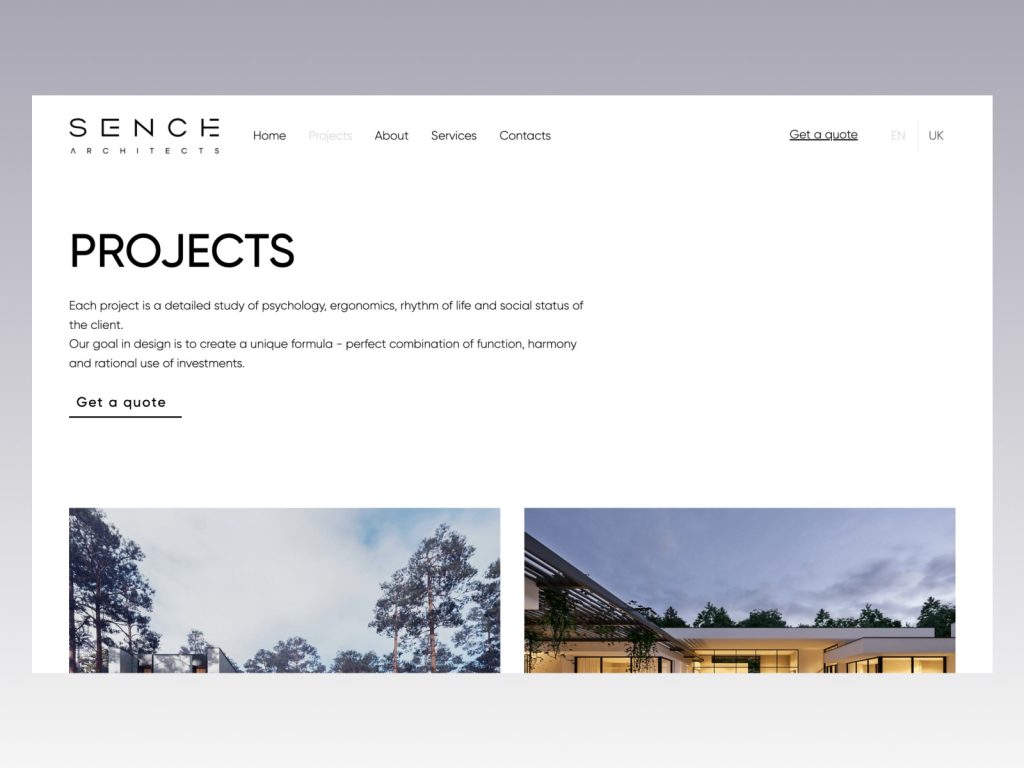
Your projects are the heart of your portfolio, especially in fields like tech, writing, design, and marketing. Showcase your strongest projects that reflect your range and problem-solving abilities.
- Selection of Work: Choose a variety of projects that demonstrate your skills. For example, a content writer might showcase blog posts, whitepapers, and case studies, while a graphic designer could include branding projects, social media graphics, and print designs.
- Detailed Project Descriptions: Explain the context for each project: the problem it addressed, your specific role, the tools or strategies used, and the measurable impact. For instance, “Created a blog strategy that increased website traffic by 50% over six months through optimized content and strategic keyword placement.”
- Visuals and Samples: Include screenshots, design samples, or snippets of code to make your projects more engaging. Writers can use excerpts or links to published articles, while designers should showcase visuals.
- Quantify Results: Whenever possible, use data to back up your achievements. Examples like “Boosted conversion rates by 30%,” or “Increased social media engagement by 25% through targeted content” highlight your impact in measurable terms.
4. Writing Samples: Build Credibility in Content-Related Roles
For writers, including samples is crucial. Curate a range of writing samples to showcase your style, versatility, and expertise.
- Diverse Content Types: Include samples across formats such as blogs, long-form articles, ad copy, and social media posts to display your range. Highlight industry-specific content if applicable.
- Optimized Content: If SEO is part of your expertise, showcase samples of optimized content that demonstrates keyword integration, readability, and search intent.
- Link to Published Work: Link directly to published articles, guest posts, or case studies on reputable websites. This reinforces your authority and provides real-world examples.
5. Graphic Design Portfolio: Visual Proof of Your Creativity

If graphic design is part of your skillset, let visuals do the talking. Organize this section with clean, well-presented samples that showcase a variety of styles.
- Branding Projects: Include brand identity projects where you created logos, color palettes, and typography systems. Describe your thought process and design choices.
- Social Media Graphics: Share social media designs with brief descriptions of their objectives and any resulting engagement metrics.
- Digital and Print Design: Showcase both digital assets, like web banners, and print designs, like brochures or flyers. Highlight software used and explain any design challenges you overcame.
6. SEO Case Studies: Highlight Your Impact on Digital Visibility
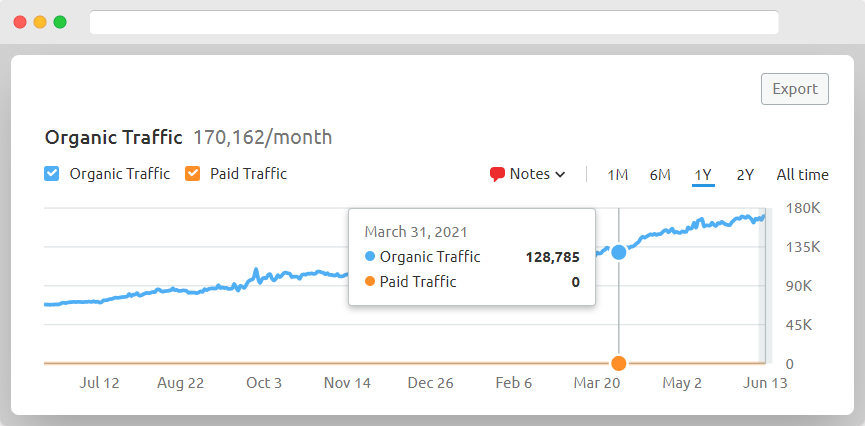
For SEO professionals, case studies demonstrate the tangible impact of your strategies. Focus on key metrics to show potential clients or employers what you can achieve.
Related Posts
- Keyword Research and Optimization: Describe your approach to keyword research, including tools used and specific keywords targeted. If applicable, link to optimized content and show ranking improvements.
- Performance Metrics: Include metrics like organic traffic growth, keyword ranking improvements, and click-through rates. For example, “Achieved a 40% increase in organic traffic within six months through on-page and technical SEO.”
- Content Strategy and Execution: Explain how you developed content that aligned with SEO goals and addressed user intent. Highlight tools like Google Analytics, Ahrefs, or SEMrush that you utilized to track success.
7. Testimonials: Build Trust with Social Proof

Testimonials from clients, employers, or colleagues provide social proof, reinforcing your credibility and value. They are particularly powerful in service-based and creative fields.
- Client Feedback: Use quotes that speak to your expertise, reliability, or ability to deliver results. For example, “Brought a fresh, creative approach to our brand’s content, resulting in a noticeable boost in engagement.”
- Logos and Endorsements: If you’ve worked with notable clients or brands, include their logos (with permission) to strengthen your credibility.
- Video Testimonials: If possible, include video testimonials. Videos are engaging and add authenticity to your portfolio.
8. Contact Information: Make It Easy to Connect
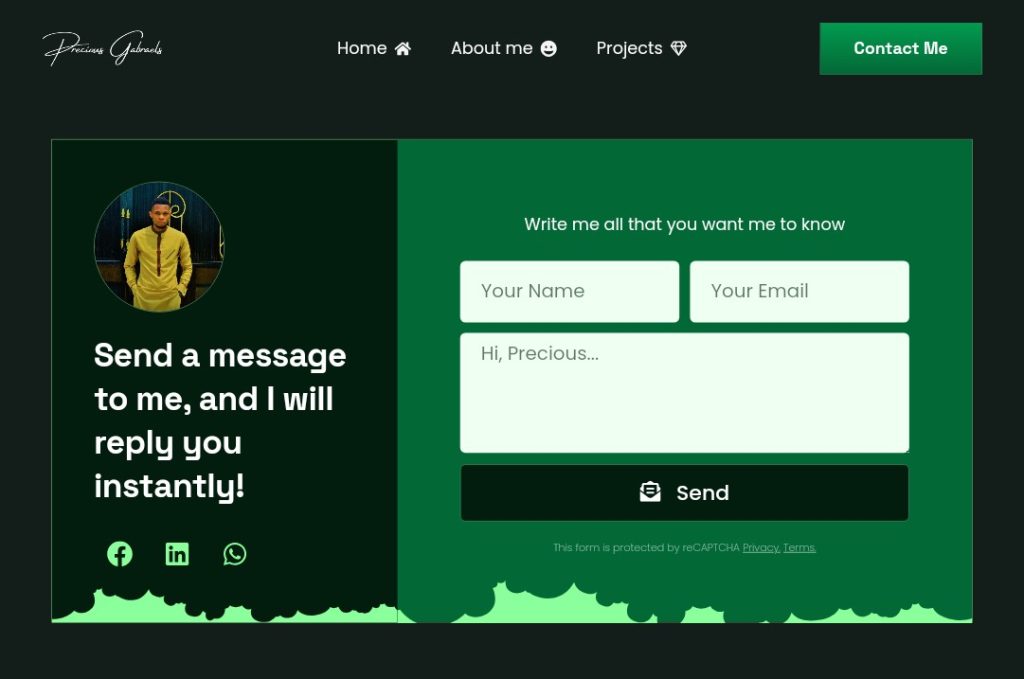
Ensure potential clients or employers can easily reach you. Offer multiple contact options for a professional touch.
- Email and Phone: Include a professional email and phone number for easy outreach.
- Social Profiles: Link to relevant social media profiles, such as LinkedIn, Twitter, GitHub, Behance, or Dribbble.
- Contact Form: If you have a personal website, a contact form can simplify outreach and capture potential leads.
Additional Tips for a Standout Portfolio
- Design Matters: Use a clean, user-friendly, and mobile-responsive design that reflects your style. Keep navigation intuitive, and consider using white space strategically to enhance readability.
- Stay Updated: Regularly update your portfolio with new projects, skills, and achievements. Consistent updates show growth and keep your portfolio relevant.
- Customize for Specific Opportunities: Tailor your portfolio when applying for specific roles. Highlight relevant projects and skills to demonstrate why you’re the ideal fit for that job.
- Optimize for SEO: Integrate SEO best practices to increase your portfolio’s online visibility. Use relevant keywords in headings, add meta descriptions, and optimize images with alt text.
Conclusion: Build a Portfolio That Elevates Your Career
Your portfolio is a powerful tool that goes beyond simply listing your skills; it is a strategic showcase of your experience, creativity, and value. By following these guidelines, you can create a comprehensive portfolio that reflects the full range of your talents, from content writing to design to SEO expertise. Invest the time to make it authentic, engaging, and impactful—your portfolio will serve as a strong first impression and a gateway to exciting career opportunities in tech, digital, and creative fields.
-

Precious Gabraels (Precious Okechukwu Nwosu) is a tech enthusiast. A professional Web Developer, Blogger, SEO Specialist, and Digital Marketer. He is also a co-founder of Nova Vamp Web Design Consultancy which specializes in the digitization of businesses.
View all posts -

Driving digital solutions for businesses and individuals using technology. Tech Clarity Coach || Writer || Author || Digital Entrepreneur || Digital Marketer || Web Development Enthusiast || Founder – Tech Sisi
View all posts
Tags: Creative skills portfolio portfolio building skill tech

